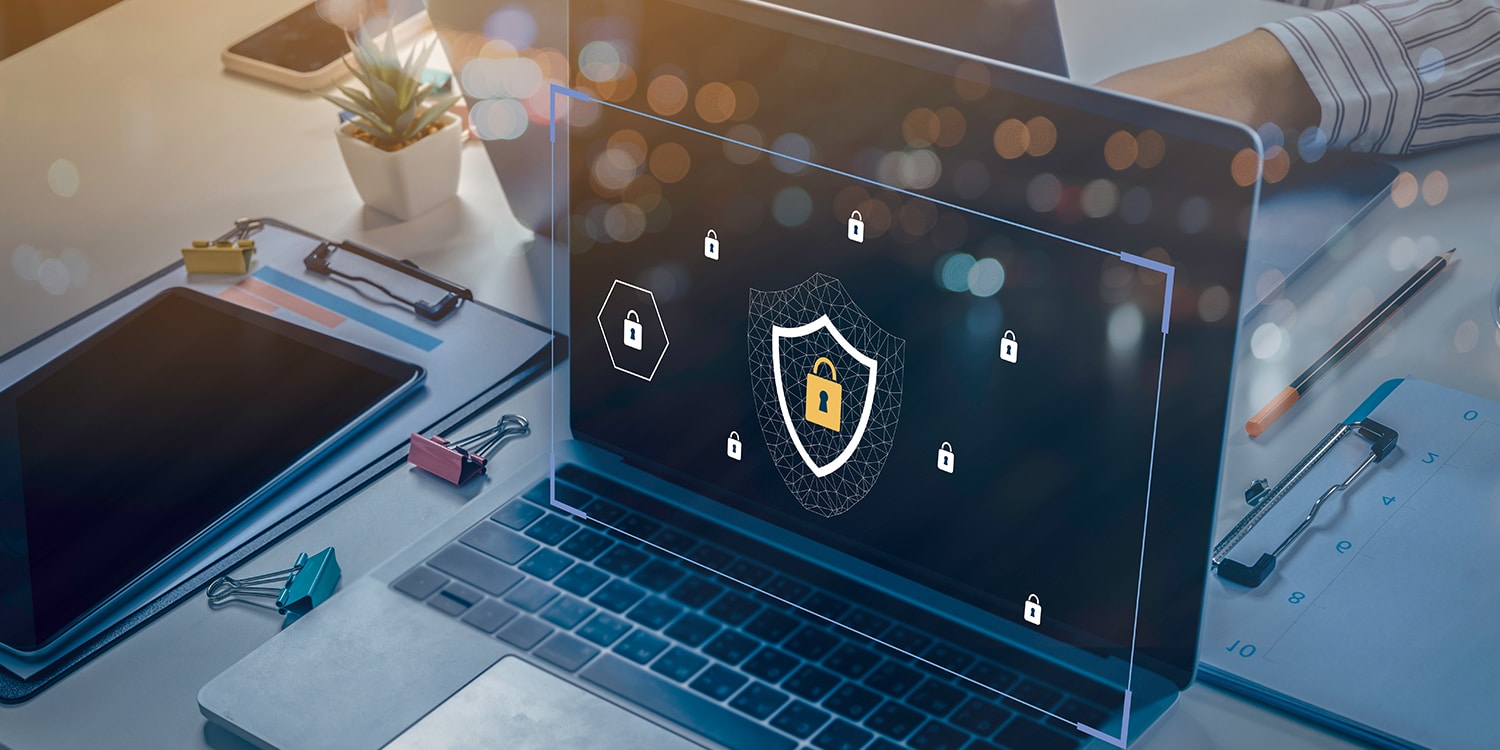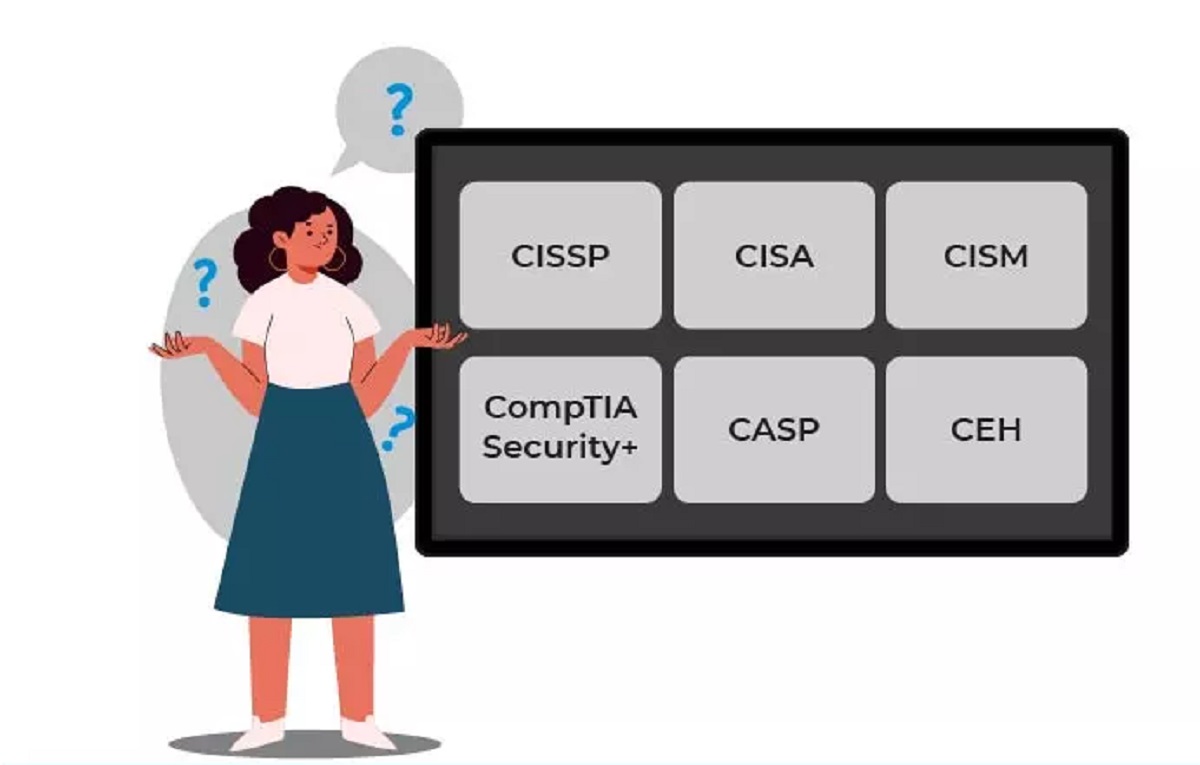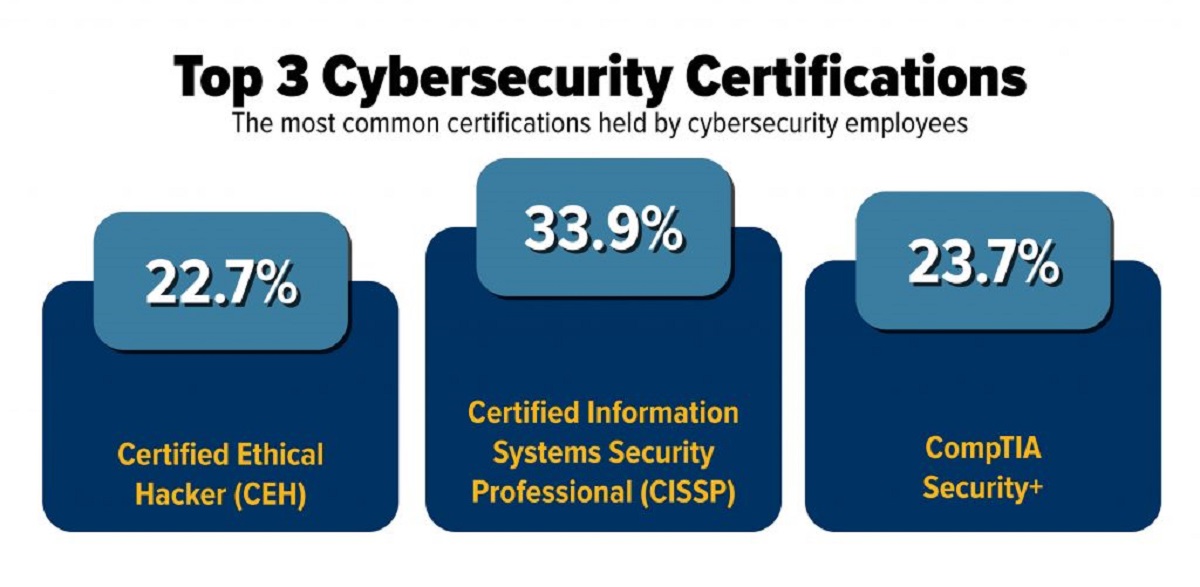Introduction
Cybersecurity is a critical aspect of today’s digital landscape, with increasing threats and vulnerabilities faced by individuals, organizations, and governments. To safeguard sensitive data and protect against attacks, cybersecurity analysts play a crucial role. These highly skilled professionals are responsible for ensuring the security of computer systems, networks, and data.
A cybersecurity analyst, also known as an information security analyst, possesses a unique set of skills and expertise to identify and mitigate potential risks. They are at the forefront of securing digital assets, combating cyber threats, and implementing robust security measures.
In today’s interconnected world, where sensitive information is constantly at risk, the role of a cybersecurity analyst has become even more crucial. Their work is essential to prevent unauthorized access, data breaches, and disruptions to computer systems.
Throughout this article, we will delve into the role and responsibilities of a cybersecurity analyst. By understanding the tasks they perform, you will gain insight into the critical role they play in maintaining the integrity and security of digital infrastructure.
Role and Responsibilities
A cybersecurity analyst plays a vital role in safeguarding computer systems and networks from potential threats. Their responsibilities span various areas, including monitoring and analyzing security systems, conducting vulnerability assessments, responding to security incidents, investigating and mitigating cyber threats, developing and implementing security measures, creating and updating security policies and procedures, providing security awareness training, collaborating with IT and management teams, and staying updated on the latest security trends and technologies. Let’s explore each of these responsibilities in detail:
- Monitoring and Analyzing Security Systems: One of the primary responsibilities of a cybersecurity analyst is to monitor and analyze security systems to detect any potential vulnerabilities or breaches. They use advanced tools and techniques to ensure the integrity and confidentiality of data.
- Conducting Vulnerability Assessments: Cybersecurity analysts perform vulnerability assessments to identify weaknesses in computer systems and networks. By conducting thorough assessments, they can proactively address vulnerabilities and strengthen the security infrastructure.
- Responding to Security Incidents: When a security incident occurs, such as a data breach or an unauthorized access attempt, cybersecurity analysts are responsible for promptly responding and mitigating the impact. They investigate the incident, assess the extent of the damage, and take necessary actions to prevent further damage.
- Investigating and Mitigating Cyber Threats: Cybersecurity analysts investigate cyber threats and malicious activities to determine the source and nature of the attack. They develop strategies to mitigate the threats and implement necessary measures to prevent future incidents.
- Developing and Implementing Security Measures: To ensure the security of computer systems and networks, cybersecurity analysts develop and implement various security measures. This includes implementing firewalls, encryption protocols, access controls, and other security technologies.
- Creating and Updating Security Policies and Procedures: Cybersecurity analysts are responsible for creating and updating security policies and procedures that outline best practices and guidelines for ensuring data security. These policies help organizations establish a strong security framework and ensure compliance with industry regulations.
- Providing Security Awareness Training: Cybersecurity analysts educate employees and stakeholders about security best practices and raise awareness about potential risks. They conduct training sessions to ensure that individuals within the organization understand their roles and responsibilities in maintaining a secure environment.
- Collaborating with IT and Management Teams: Cybersecurity analysts work closely with IT teams and management to align security initiatives with organizational goals. They provide insights and recommendations to enhance the overall security posture and ensure that security is incorporated into all aspects of the organization’s operations.
- Staying Updated on the Latest Security Trends and Technologies: Given the ever-evolving nature of cybersecurity threats, it is crucial for cybersecurity analysts to stay abreast of the latest trends and technologies. They continuously update their knowledge and skills to adapt to emerging threats and implement effective security measures.
By fulfilling these diverse responsibilities, cybersecurity analysts play a pivotal role in protecting organizations from cyber threats, ensuring data privacy, and maintaining the integrity of computer systems and networks.
Monitoring and Analyzing Security Systems
One of the primary responsibilities of a cybersecurity analyst is to monitor and analyze security systems to ensure the integrity and security of computer systems and networks. They employ advanced tools and techniques to proactively detect potential vulnerabilities and unauthorized access attempts.
Cybersecurity analysts continuously monitor and assess the performance of security systems, including firewalls, intrusion detection systems, and antivirus software. They analyze system logs, network traffic, and security alerts to identify any suspicious activities or indicators of a security breach.
Through comprehensive monitoring, cybersecurity analysts can detect potential threats in real time. They assess the severity of the threat, investigate the source, and determine the potential impact on the organization’s systems and data.
By analyzing security systems, cybersecurity analysts gain valuable insights into the effectiveness of existing security measures. They identify any weaknesses or vulnerabilities and recommend necessary improvements to enhance the overall security posture.
In addition, cybersecurity analysts stay updated on the latest security threats and attack techniques. They continuously research and assess emerging cyber threats to anticipate potential risks and develop proactive measures to mitigate them.
Moreover, cybersecurity analysts collaborate with IT teams and stakeholders to ensure that security systems are properly configured and aligned with organizational goals. They provide expertise in implementing security controls and monitoring procedures to maintain a secure environment.
Overall, monitoring and analyzing security systems is a critical responsibility of a cybersecurity analyst. By being vigilant and proactive, they can identify and address potential vulnerabilities, protect against unauthorized access, and maintain the integrity and security of computer systems and networks.
Conducting Vulnerability Assessments
Another important responsibility of a cybersecurity analyst is to conduct vulnerability assessments to identify weaknesses in computer systems and networks. By systematically assessing vulnerabilities, they can take proactive measures to address potential risks and strengthen the organization’s security infrastructure.
Cybersecurity analysts utilize various tools and methodologies to conduct comprehensive vulnerability assessments. They perform network scanning, penetration testing, and ethical hacking to identify potential entry points for unauthorized access or data breaches.
During vulnerability assessments, cybersecurity analysts identify both known and unknown vulnerabilities. They analyze the configuration of systems, assess the security of applications, and examine potential gaps in network security protocols.
Once vulnerabilities are identified, cybersecurity analysts prioritize them based on the potential impact and likelihood of exploitation. They provide recommendations for remediation, such as applying patches, updating software, or reconfiguring security settings.
Moreover, cybersecurity analysts collaborate with IT teams to ensure that mitigation measures do not adversely affect system performance. They work together to implement effective controls and preventive measures to reduce the organization’s overall risk exposure.
Conducting vulnerability assessments is an ongoing process for cybersecurity analysts. They regularly assess systems and networks to identify new vulnerabilities introduced by system updates, new applications, or changes in the threat landscape.
By conducting comprehensive vulnerability assessments, cybersecurity analysts play a crucial role in preventing potential security breaches. They help organizations maintain a strong security posture by addressing vulnerabilities proactively and ensuring the resilience of their computer systems and networks.
Responding to Security Incidents
One of the key roles of a cybersecurity analyst is to respond promptly and effectively to security incidents. When a security breach or incident occurs, it is crucial for cybersecurity analysts to take immediate action to minimize damage, contain the incident, and restore the security of systems and data.
Cybersecurity analysts are trained to handle different types of security incidents, including data breaches, malware infections, unauthorized access attempts, and denial-of-service attacks. They follow established incident response protocols and work closely with incident response teams to coordinate their efforts.
When a security incident is detected, cybersecurity analysts conduct a thorough investigation to gather evidence, determine the extent of the breach, and identify the source of the attack. They analyze system logs, network traffic, and other artifacts to reconstruct the sequence of events.
Based on their findings, cybersecurity analysts develop a response plan tailored to the specific incident. They work collaboratively with IT teams and stakeholders to implement containment measures, disconnect compromised systems from the network, and mitigate the impact of the incident.
In addition to containment, cybersecurity analysts also focus on recovery and restoration. They restore affected systems to a secure state, apply necessary patches, and implement additional security controls to prevent similar incidents from occurring in the future.
Throughout the incident response process, cybersecurity analysts maintain clear communication with stakeholders, including management, IT teams, and external parties such as law enforcement or regulatory authorities. They keep all parties informed about the incident, its impact, and the steps being taken to address and mitigate the situation.
Post-incident, cybersecurity analysts conduct a thorough analysis of the incident to identify lessons learned and improve future incident response capabilities. They assess the effectiveness of incident response protocols, update security measures, and provide recommendations to prevent similar incidents in the future.
By responding effectively to security incidents, cybersecurity analysts play a critical role in minimizing the impact of breaches and ensuring the resilience and security of computer systems and data.
Investigating and Mitigating Cyber Threats
A significant responsibility of a cybersecurity analyst is to investigate and mitigate cyber threats. They are tasked with analyzing and understanding the nature of threats, identifying potential risks, and developing strategies to mitigate them.
When a cyber threat is detected or reported, cybersecurity analysts initiate an investigation to determine the source, intentions, and potential impact of the threat. They analyze indicators of compromise, study attack patterns, and consult threat intelligence sources to gain insights into the threat landscape.
Through their investigation, cybersecurity analysts aim to understand the tactics, techniques, and procedures employed by threat actors. This knowledge allows them to adopt a proactive approach in developing countermeasures and implementing necessary mitigations.
Once they have gathered sufficient information, cybersecurity analysts collaborate with IT teams and stakeholders to mitigate the identified threats. They recommend and implement security controls, such as enhanced access controls, network segmentation, or data encryption, to reduce the organization’s risk exposure.
Cybersecurity analysts work closely with incident response teams to ensure a timely and coordinated response to cyber threats. They provide expertise and guidance during incident response efforts, ensuring that appropriate actions are taken to contain and eradicate threats, minimize impact, and restore normal operations.
In addition to immediate response efforts, cybersecurity analysts focus on long-term threat mitigation. They develop strategies to enhance the organization’s overall security posture by implementing advanced threat detection systems, deploying security patches and updates, and continuously monitoring and analyzing security systems.
Furthermore, cybersecurity analysts play an integral role in threat intelligence gathering and sharing. They participate in information sharing platforms, collaborate with external entities, and contribute to the broader cybersecurity community to stay updated on emerging threats and collectively combat cybercrime.
By investigating and mitigating cyber threats, cybersecurity analysts contribute to the protection of valuable assets and sensitive data. Their efforts help organizations proactively address potential risks, strengthen their security infrastructure, and maintain a resilient defense against evolving cyber threats.
Developing and Implementing Security Measures
A significant responsibility of a cybersecurity analyst is to develop and implement security measures to safeguard computer systems, networks, and data from potential threats. By designing and deploying effective security measures, they help organizations establish a robust security infrastructure.
Cybersecurity analysts assess the security landscape and identify areas where additional security measures are necessary. They evaluate existing policies, procedures, and technologies to ensure they align with industry best practices and regulatory requirements.
Based on their analysis, cybersecurity analysts develop security strategies tailored to the specific needs and risks of the organization. This includes recommending and implementing security controls, such as firewalls, intrusion detection systems, encryption protocols, and access controls.
When designing security measures, cybersecurity analysts consider multiple layers of defense to ensure a comprehensive approach to security. They implement proactive measures, including vulnerability scanning, penetration testing, and continuous monitoring, to identify and address potential weaknesses before they can be exploited.
Furthermore, cybersecurity analysts work closely with IT teams to ensure the effective implementation of security measures. They collaborate in configuring systems and software to maximize security and minimize vulnerabilities.
As new threats emerge, cybersecurity analysts adapt security measures accordingly. They stay informed about the latest security technologies and trends, continuously evaluating and updating security measures to address evolving threats.
Additionally, cybersecurity analysts facilitate the adoption of security best practices within the organization. They provide training and awareness programs to educate employees about security protocols, safe browsing habits, and the importance of strong passwords.
Through their expertise and guidance, cybersecurity analysts help create a security-conscious culture within the organization, ensuring that all stakeholders understand their roles in maintaining a secure environment.
By developing and implementing security measures, cybersecurity analysts play a crucial role in protecting sensitive information and mitigating potential risks. Their efforts contribute to the establishment of a strong security foundation that defends against cyber threats and safeguards the organization’s digital assets.
Creating and Updating Security Policies and Procedures
A vital responsibility of a cybersecurity analyst is to create and update security policies and procedures that establish guidelines for ensuring data security and protecting against cyber threats. Security policies serve as a framework for the organization, setting the standards and best practices for maintaining a secure environment.
Cybersecurity analysts work closely with stakeholders, including management and legal teams, to develop comprehensive security policies that align with industry regulations and organizational goals. These policies define roles and responsibilities, acceptable use of resources, incident response procedures, and guidelines for data protection.
When creating security policies, cybersecurity analysts prioritize clarity and enforceability, ensuring that the policies are easily understood and followed by employees at all levels of the organization. They also consider the unique needs and risks of the organization to tailor policies to its specific requirements.
In addition to creating policies, cybersecurity analysts play a crucial role in updating them on an ongoing basis. They identify emerging threats, new regulatory requirements, and changes in the technology landscape that may necessitate revisions to existing policies.
By staying up to date with the rapidly evolving cybersecurity landscape, cybersecurity analysts ensure that policies are current and effective in addressing the latest threats. They collaborate with management and IT teams to review and revise policies as needed.
Moreover, cybersecurity analysts assist in the implementation and enforcement of security policies across the organization. They communicate policies to employees, provide training on policy requirements, and monitor compliance to ensure that security measures are consistently followed.
Regular audits and assessments are conducted by cybersecurity analysts to evaluate the effectiveness of security policies and procedures. They identify any gaps or areas for improvement and provide recommendations for enhancements to ensure continued adherence to industry standards.
Creating and updating security policies and procedures is an ongoing process that enables organizations to adapt to changing threats and maintain a strong security posture. As a result of the diligent efforts of cybersecurity analysts, organizations can establish clear guidelines and expectations for maintaining data security and protecting against cyber threats.
Providing Security Awareness Training
One of the critical responsibilities of a cybersecurity analyst is to provide security awareness training to employees and stakeholders within the organization. By educating individuals about potential risks and best practices, cybersecurity analysts play a pivotal role in creating a culture of security consciousness.
Cybersecurity analysts develop and deliver training programs that aim to raise awareness about common security threats, such as phishing attacks, social engineering, and malware. They educate employees on how to recognize and report suspicious activities, as well as the potential consequences of a security breach.
During security awareness training sessions, cybersecurity analysts emphasize the importance of following security policies and procedures. They provide practical guidance on creating strong passwords, maintaining the confidentiality of sensitive information, and using secure communication channels.
Additionally, cybersecurity analysts address the significance of regular software updates, the safe use of removable storage devices, and the importance of data backup practices. They highlight the role of every individual in maintaining a secure environment and encourage reporting any potential security incidents.
Continuous reinforcement is a crucial aspect of security awareness training. Cybersecurity analysts regularly provide reminders, newsletters, or online resources to keep employees informed about the latest threats and security best practices.
Moreover, cybersecurity analysts tailor security awareness training to different departments and job roles within the organization. They understand that different teams may have specific security considerations and provide targeted training to address their unique needs.
By providing effective security awareness training, cybersecurity analysts empower employees to become the first line of defense against cyber threats. Employees are equipped with the knowledge and skills to identify potential risks and take proactive measures, significantly reducing the organization’s vulnerability to attacks.
Ultimately, security awareness training conducted by cybersecurity analysts fosters a security-conscious culture within the organization. It engenders a sense of shared responsibility for maintaining data security and creates a unified front against cyber threats.
Collaborating with IT and Management Teams
Collaboration with IT and management teams is a crucial aspect of a cybersecurity analyst’s role. By working closely with these teams, cybersecurity analysts ensure that security initiatives align with organizational goals and are effectively implemented.
One key aspect of collaboration is to provide expertise and guidance to IT teams during the implementation of security measures. Cybersecurity analysts work hand in hand with IT professionals to configure and deploy security controls, such as firewalls, intrusion detection systems, and endpoint protection solutions.
Collaboration with IT teams also extends to incident response efforts. When a security incident occurs, cybersecurity analysts collaborate with the IT incident response team to coordinate an effective response. They provide technical guidance, aid in evidence collection, and assist in implementing remediation measures.
Furthermore, cybersecurity analysts collaborate with management teams to ensure that security initiatives align with the overall business objectives and risk management strategies. They provide insights into the potential impact of security risks and advise on the allocation of resources to address those risks.
Collaboration with management also involves providing regular updates on the organization’s security posture, including key metrics and indicators of success. Cybersecurity analysts effectively communicate the challenges, progress, and areas of improvement to management, helping to foster a culture of transparency and accountability.
Moreover, cybersecurity analysts collaborate with management teams in setting priorities and making informed decisions related to cybersecurity investments and resource allocation. They assist in the development of budgets and business cases for security initiatives and advocate for the implementation of necessary security measures.
Through collaboration with both IT and management teams, cybersecurity analysts bridge the gap between technical security requirements and strategic business objectives. They ensure that security is integrated into the organization’s overall operations, creating a strong foundation for an effective security posture.
In summary, collaboration with IT and management teams is vital for a cybersecurity analyst. By working closely with these teams, cybersecurity analysts ensure the effective implementation of security measures, coordinate incident response efforts, align security initiatives with organizational goals, and advocate for cybersecurity investments and resource allocation.
Staying Updated on the Latest Security Trends and Technologies
Staying updated on the latest security trends and technologies is an essential responsibility of a cybersecurity analyst. It is crucial to be aware of emerging threats, new attack techniques, and advancements in security technologies in order to effectively protect computer systems and networks.
Cybersecurity analysts constantly monitor the ever-evolving cybersecurity landscape through various channels, such as industry publications, research papers, and security conferences. They stay informed about the latest trends, vulnerabilities, and emerging cyber threats.
By staying updated, cybersecurity analysts can anticipate potential risks and proactively develop strategies to mitigate them. They can adopt new security measures, implement best practices, and recommend solutions to address emerging threats.
Additionally, cybersecurity analysts participate in professional development activities, such as attending cybersecurity training programs and obtaining certifications. These activities enhance their knowledge and skills, ensuring they stay abreast of advancements in the field.
Furthermore, cybersecurity analysts actively engage with the broader cybersecurity community. They participate in forums, online communities, and networks where they can share insights, collaborate with peers, and exchange information on the latest security trends and technologies.
Cybersecurity analysts also collaborate with technology vendors and attend security vendor briefings to stay updated on the latest security technologies and products. By understanding the capabilities of different solutions, they can make informed recommendations and implement the most appropriate security measures.
Moreover, cybersecurity analysts assess the applicability of emerging technologies, such as artificial intelligence, machine learning, and blockchain, in enhancing security measures. They keep a pulse on advancements in these areas and evaluate their potential impact on cybersecurity.
By staying updated on the latest security trends and technologies, cybersecurity analysts can advise management and IT teams on the adoption of effective security measures. They assist in making informed decisions regarding the implementation of new technologies and the allocation of resources to address emerging cyber threats.
In summary, staying updated on the latest security trends and technologies is essential for a cybersecurity analyst. By being vigilant and continuously expanding their knowledge, they can effectively protect computer systems and networks against evolving cyber threats and deploy the most appropriate security measures.
Conclusion
Cybersecurity analysts play a critical role in safeguarding computer systems, networks, and data from potential threats. Their diverse set of responsibilities encompasses monitoring and analyzing security systems, conducting vulnerability assessments, responding to security incidents, investigating and mitigating cyber threats, developing and implementing security measures, creating and updating security policies and procedures, providing security awareness training, collaborating with IT and management teams, and staying updated on the latest security trends and technologies.
Through monitoring and analyzing security systems, cybersecurity analysts proactively detect vulnerabilities and detect potential unauthorized access attempts. Conducting vulnerability assessments allows them to identify weaknesses and recommend necessary improvements to fortify the organization’s security infrastructure.
In response to security incidents, cybersecurity analysts initiate investigations, collaborate with IT teams, and ensure prompt containment, eradication, and recovery measures. By investigating and mitigating cyber threats, they contribute to the prevention and mitigation of potential breaches, and continuously update security systems to address evolving risks.
Moreover, cybersecurity analysts develop and implement security measures, such as firewalls, encryption protocols, and access controls, to safeguard against potential threats. They collaborate with IT and management teams to align security initiatives with organizational goals and ensure their effective implementation.
Security awareness training provided by cybersecurity analysts educates employees and stakeholders about security best practices and the potential risks posed by cyber threats. They foster a security-conscious culture within the organization, empowering individuals to become active participants in maintaining a secure environment.
Finally, staying updated on the latest security trends and technologies is a critical responsibility of cybersecurity analysts. By continually expanding their knowledge and understanding emerging threats, they can effectively protect computer systems and networks against evolving risks and deploy the most appropriate security measures.
In conclusion, cybersecurity analysts are at the forefront of protecting digital infrastructure by carrying out dynamic responsibilities that ensure the integrity, confidentiality, and availability of information. Their expertise and diligence are crucial in the ever-evolving landscape of cybersecurity, significantly contributing to the resilience and security of organizations in the face of an ever-increasing threat landscape.

























